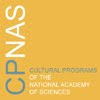Picturing Practices
From: Susan Squier
Date: Mon, 05 Mar 2007 10:03:32 -0500
Carl Djerassi writes that his use of picturing practices has the didactic component of ‘information transmission.’ I view the function of picturing practices somewhat differently. I understand images to be conveying in condensed form the tangle of human relations, practices, wishes, desires and fears that pose social, political and ethical challenges to scientific practice. Such condensed imagesor as Ludwik Fleck terms them, ideogramsserve a particularly important role as sites where alien and archaic thought styles are preserved even into our modern era. As Fleck points out, “To the unsophisticated research worker limited by his own thought style, any alien thought style appears like a free flight of fancy, because he can see only that which is active and almost arbitrary about it.” Yet whether they are ancient or modern, ideograms are essential to science, as part of the process of knowledge production and knowledge dissemination: “There is no visual perception except by ideovision and there is no other kind of illustration than ideograms.” (Fleck 1935, 1979:141)

To turn to a specific and curiously overdetermined--example, in a 1995 essay I explore a photographic image, by Jock McDonald, of a pregnant Carl Djerassi.[1] I argue that this photograph, published in the Stanford Alumni Magazine, not only provides us with a witty visual play on Djerassi’s role as father of the birth control pill. It speaks to a powerful fantasy fueling the technique of assisted reproduction: the wish to usurp female procreative power. This fantasy, Evelyn Fox Keller has shown us, is intimately linked to the rise of modern science. It has been explored in literature as long ago as Mary Shelley’s Frankenstein and as recently as Angela Carter’s blistering The Passion of New Eve. And as I have demonstrated in Babies in Bottles, it is a fantasy frequently invoked by scientists, fiction writers and the popular press in the years during which the building blocks of assisted reproduction were being developed: tissue culture, embryo culture, laparoscopy, and in vitro fertilization.
Lest it seem that literature is the only place such fantasies are explored, I also point out in my article that McDonald’s image was preceded by a public policy debate on the same question. In 1989, the Australian National Bioethics Consultative Committee issued a discussion paper, “Developments in the Health Field with Bioethical Implications.” In a section on “Transsexualism and Abdominal Pregnancy,” the paper considered whether a case could be made for male pregnancy as a bioethical right. The argument for male pregnancy as a right for transsexual men envisioned a time when abdominal pregnancy was possible for biological men, including those who had undergone sex reassignment surgery. The right to a male abdominal pregnancy could then upheld, the argument hypothesized, as part of one’s right to reproductive autonomy. The counter argument held pregnancy to be a collective choice bearing significant social responsibilities:It may be that the only possible approach to the potential demand for abdominal pregnancy is to focus, not on the desires of individuals, but on the social and political questions posed by resource allocation and the ethical questions posed by the appeal to a technological imperative. (Albury C-4, C-8, in Squier 128)
As my use of McDonald’s photograph in my article demonstrates, I understand the image of the pregnant Carl Djerassi as more than a humorous, topical riff on scientific reality. To my way of thinking, it does indeed convey information, but not precisely in the mimetic sense that Djerassi's post suggest. Rather, the information conveyed is closer to that contained in Fleck’s ideograms: the rich, complex mixture of socially, politically, and personally freighted tensions and desires that gave rise to, and now issue from, the scientific practices we know as assisted reproduction.
[1] Susan Squier, “Reproducing the Posthuman Body: Ectogenetic Fetus, Surrogate Mother, Pregnant Man” in Judith Halberstam and Ira Livingston, Eds. Posthuman Bodies (Bloomington: Indiana University Press, 1995: 113-132.
Susan Squier
Brill Professor of Women's Studies, English, and STS
The Pennsylvania State University
to comment on this post, click on "comments" below
to return to main page go to www.visualcultureandbioscience.org

No comments:
Post a Comment